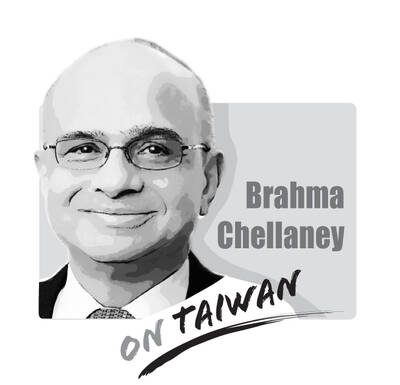On the Internet, things get old fast. One prime candidate for the digital dustbin, it seems, is the current approach to protecting privacy on the Internet.
It is an artifact of the 1990s, intended as a light-touch policy to nurture innovation in an emerging industry. And its central concept is “notice and choice,” in which Web sites post notices of their privacy policies and users can then make choices about sites they frequent and the levels of privacy they prefer.
However, policy and privacy experts agree that the relentless rise of Internet data harvesting has overrun the old approach of using lengthy written notices to safeguard privacy.

These statements are rarely read, are often confusing and can’t hope to capture the complexity of modern data-handling practices. As a result, experts say, consumers typically have little meaningful choice about the online use of their personal information — whether their birth dates, addresses, credit card numbers or Web-browsing habits.
“There are essentially no defenders anymore of the pure notice-and-choice model,” said Daniel Weitzner, a senior policy official at the National Telecommunications and Information Administration of the Commerce Department. “It’s no longer adequate.”
So if the current model is broken, how can it be fixed? There are two broad answers: rules and tools.
Rules would mean new regulations. The US Congress and the Federal Trade Commission are looking at further rules that could limit how personal information is used. For example, the government might ban the use of recorded trails of a person’s Web-browsing behavior — so-called click streams — in employment or health insurance decisions.
Still, the next round of online privacy regulation needs to proceed carefully, policy experts warn. They say that online data collection and analysis is an economic imperative, and that the Internet industry of the future will involve adding value to the free flow of information — much of it created by individuals and their browsing activity. Google, Facebook and Twitter are evidence of the trend, and so are legions of start-ups seeking riches in fields like social networking, cloud computing and smartphone applications.
“Getting this balance right is critical to the future of the Web, to foster innovation and economic growth,” Weitzner said.
Whatever the future of regulation, better digital tools are needed. Enhancing online privacy is a daunting research challenge that involves not only computing, but also human behavior and perception. So researchers nationwide are tackling the issue in new ways.
At Carnegie Mellon University, a group is working on what it calls “privacy nudges.” This approach taps computer science techniques like machine learning, natural language processing and text analysis, as well as disciplines like behavioral economics.
The goal is to design software that essentially sits over your shoulder and provides real-time reminders — short on-screen messages — that the information you’re about to send has privacy implications.
“It learns, helps you and occasionally prompts you,” said Lorrie Faith Cranor, a computer scientist at Carnegie Mellon. “When we go online, there are a lot of ways we can inadvertently give up our privacy.”
On a social networking site, Cranor says, people often type in their birth dates and widely circulate them, hoping to receive online birthday greetings. But a birth date posted online, she says, can also be used for marketing profiling, identification and potentially identity theft. A software agent, she says, could inform the user of that before a birth date is typed.
An on-screen alert is a mild nudge. A stronger one might be automatically enrolling the user in an online lottery for cash prizes (perhaps financed by the industry, to avoid tougher privacy regulation), if the person doesn’t disclose potentially sensitive personal information.
The stronger incentive, says Alessandro Acquisti, a researcher who specializes in the economics of privacy, may be needed to offset the bias toward immediate gratification in human decision-making — thinking only of the emotionally satisfying birthday greeting next week instead of the privacy risks down the road.
Ryan Calo, a fellow at the Center for Internet and Society at Stanford Law School, is exploring technologies that deliver “visceral notice.” His research involves voice and animation technology that emulates humans. When putting information in a personal health record, for example, a virtual nurse could explain to the user the privacy implications, and trade-offs, of sharing personal information with doctors, family members, insurers and drug companies.
Calo explains that people naturally react more strongly, in a visceral way, to anthropomorphic cues. He points to a sociological experiment that had people pay for coffee on an honor system. One box for depositing cash had a picture of flowers on it, while another had a picture of human eyes. Time and again, he said, people paid more often for coffee when the box had eyes instead of flowers.
“Our brains are hard-wired to respond to images that look human, alive,” Calo said.
At Princeton, Edward Felten, a computer scientist, wants to re-engineer the Web browser for greater privacy. A key, he says, is to alter the software’s design so that information about on-screen viewing sessions is kept separate and not routinely passed along so a person’s browsing behavior can be tracked. His plan would push mainstream browsing toward anonymous mode, which can be done in the latest browser software, but only by opening a separate, specially designed window.
“The browser needs to be less promiscuous about revealing the information collected,” Felten said.
A response to my article (“Invite ‘will-bes,’ not has-beens,” Aug. 12, page 8) mischaracterizes my arguments, as well as a speech by former British prime minister Boris Johnson at the Ketagalan Forum in Taipei early last month. Tseng Yueh-ying (曾月英) in the response (“A misreading of Johnson’s speech,” Aug. 24, page 8) does not dispute that Johnson referred repeatedly to Taiwan as “a segment of the Chinese population,” but asserts that the phrase challenged Beijing by questioning whether parts of “the Chinese population” could be “differently Chinese.” This is essentially a confirmation of Beijing’s “one country, two systems” formulation, which says that
Media said that several pan-blue figures — among them former Chinese Nationalist Party (KMT) chairwoman Hung Hsiu-chu (洪秀柱), former KMT legislator Lee De-wei (李德維), former KMT Central Committee member Vincent Hsu (徐正文), New Party Chairman Wu Cheng-tien (吳成典), former New Party legislator Chou chuan (周荃) and New Party Deputy Secretary-General You Chih-pin (游智彬) — yesterday attended the Chinese Communist Party’s (CCP) military parade commemorating the 80th anniversary of the end of World War II. China’s Xinhua news agency reported that foreign leaders were present alongside Chinese President Xi Jinping (習近平), such as Russian President Vladimir Putin, North Korean leader Kim

Taiwan stands at the epicenter of a seismic shift that will determine the Indo-Pacific’s future security architecture. Whether deterrence prevails or collapses will reverberate far beyond the Taiwan Strait, fundamentally reshaping global power dynamics. The stakes could not be higher. Today, Taipei confronts an unprecedented convergence of threats from an increasingly muscular China that has intensified its multidimensional pressure campaign. Beijing’s strategy is comprehensive: military intimidation, diplomatic isolation, economic coercion, and sophisticated influence operations designed to fracture Taiwan’s democratic society from within. This challenge is magnified by Taiwan’s internal political divisions, which extend to fundamental questions about the island’s identity and future
Taiwan People’s Party (TPP) Chairman Huang Kuo-chang (黃國昌) is expected to be summoned by the Taipei City Police Department after a rally in Taipei on Saturday last week resulted in injuries to eight police officers. The Ministry of the Interior on Sunday said that police had collected evidence of obstruction of public officials and coercion by an estimated 1,000 “disorderly” demonstrators. The rally — led by Huang to mark one year since a raid by Taipei prosecutors on then-TPP chairman and former Taipei mayor Ko Wen-je (柯文哲) — might have contravened the Assembly and Parade Act (集會遊行法), as the organizers had